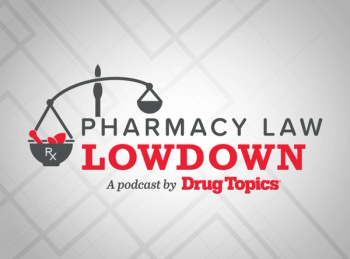
1976: Nation's supply of pharmacists is smaller than you think
An "outpouring of new pharmacy-school graduates." "Fears of a manpower glut." 2016 headlines? Nope. The year was 1976.
Forty years ago, the American Association of Colleges of Pharmacy undertook the Pharmacy Manpower Information Project, a study that helped to relieve prevailing fears of a manpower glut, in spite of "the outpouring of new pharmacy-school graduates."
The January 15 edition of Drug Topics that year reported that in the spring of 1975, there were 6,450 pharmacy graduates, an increase of 12% over the previous year. Newly minted graduates were expected to reach 7,400 in 1976 and then 8,100 by 1977.
In 1976, more than 20% of pharmacists in seven states were age 60 and older, and nearing retirement. The states in question were Missouri, New York, Maine, New Hampshire, Massachusetts, Nevada, and Connecticut.
"There will be a minor manpower squeeze over the course of the next several years as the newer pharmacists are integrated into practice and as others leave because of age, health, or because they have become obsolescent practitioners ⦠In the slightly longer term, I can see no rational case for an oversupply of 21st-century-oriented pharmacists," said Raymond A. Gosselin, president of the Massachusetts College of Pharmacy.
Times have changed
According to the Pharmacy Workforce Centerâs monthly analysis of November 2015, the nationwide supply of pharmacists had exceeded the number of available jobs, specifically in Massachusetts, New York, and Connecticut, with aggregate demand indices of 1.75, 2.00, and 2.33, respectively.
"The Midwest and Northeast averaged ratings reflected somewhat of a surplus at 2.77, and 2.32, respectively," the November monthly report stated.
In 1976, there were fewer independent pharmacists than projections had assumed. At that time, independent pharmacists accounted "for less than half of total professional employment."
In addition, "Close to 15% of the pharmacists are engaged in hospital or other clearly defined forms of institutional practice," said the 1976 report.
By the time the 2014 National Pharmacist Workforce Survey was published, the percentage of pharmacists working in a hospital setting had almost doubled (29.4%).
Big dropout factor
About 16% of the nation's licensed pharmacists were not holding a job in pharmacy in 1976.
In 2014, about 22% were not practicing pharmacy or working in a pharmacy-related career â with more men (31.6%) than women (13.5%) dropping out, according to the respondents of the 2014 National Pharmacist Workforce Survey.
Newsletter
Pharmacy practice is always changing. Stay ahead of the curve with the Drug Topics newsletter and get the latest drug information, industry trends, and patient care tips.













































































































































